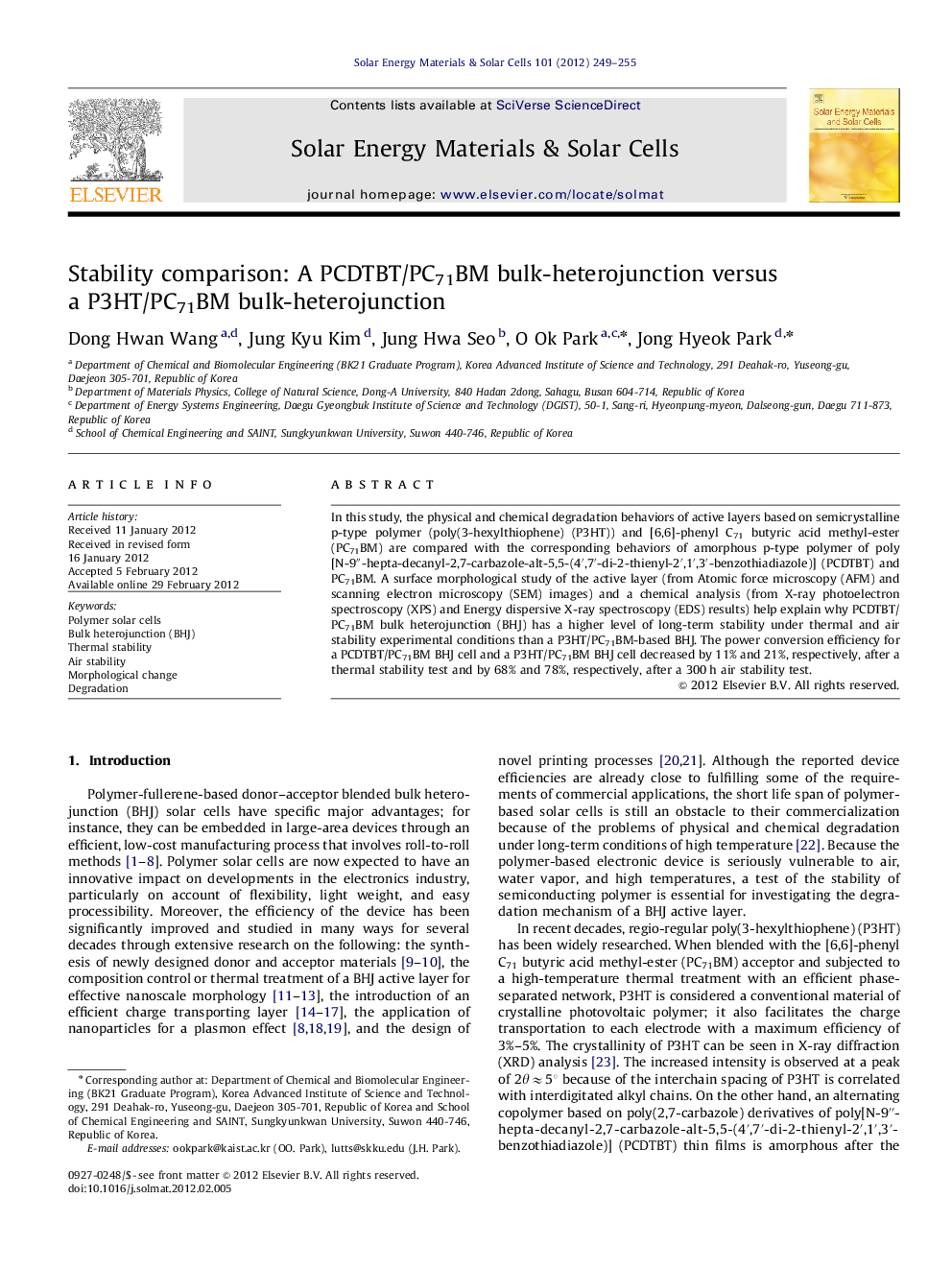| Article ID | Journal | Published Year | Pages | File Type |
|---|---|---|---|---|
| 79304 | Solar Energy Materials and Solar Cells | 2012 | 7 Pages |
In this study, the physical and chemical degradation behaviors of active layers based on semicrystalline p-type polymer (poly(3-hexylthiophene) (P3HT)) and [6,6]-phenyl C71 butyric acid methyl-ester (PC71BM) are compared with the corresponding behaviors of amorphous p-type polymer of poly[N-9″-hepta-decanyl-2,7-carbazole-alt-5,5-(4′,7′-di-2-thienyl-2′,1′,3′-benzothiadiazole)] (PCDTBT) and PC71BM. A surface morphological study of the active layer (from Atomic force microscopy (AFM) and scanning electron microscopy (SEM) images) and a chemical analysis (from X-ray photoelectron spectroscopy (XPS) and Energy dispersive X-ray spectroscopy (EDS) results) help explain why PCDTBT/PC71BM bulk heterojunction (BHJ) has a higher level of long-term stability under thermal and air stability experimental conditions than a P3HT/PC71BM-based BHJ. The power conversion efficiency for a PCDTBT/PC71BM BHJ cell and a P3HT/PC71BM BHJ cell decreased by 11% and 21%, respectively, after a thermal stability test and by 68% and 78%, respectively, after a 300 h air stability test.
Graphical Abstract.Figure optionsDownload full-size imageDownload as PowerPoint slideHighlights► Polymer solar cells with a PCDTBT/PC71BM BHJ have an efficient device with remarkable long-term and high-temperature stability. ► The PCDTBT/PC71BM BHJ cells are highly resistant to the physical and chemical degradation. ► The morphology is maintained and the chemical bonding is conserved at the BHJ active layer after thermal and air stability test.
